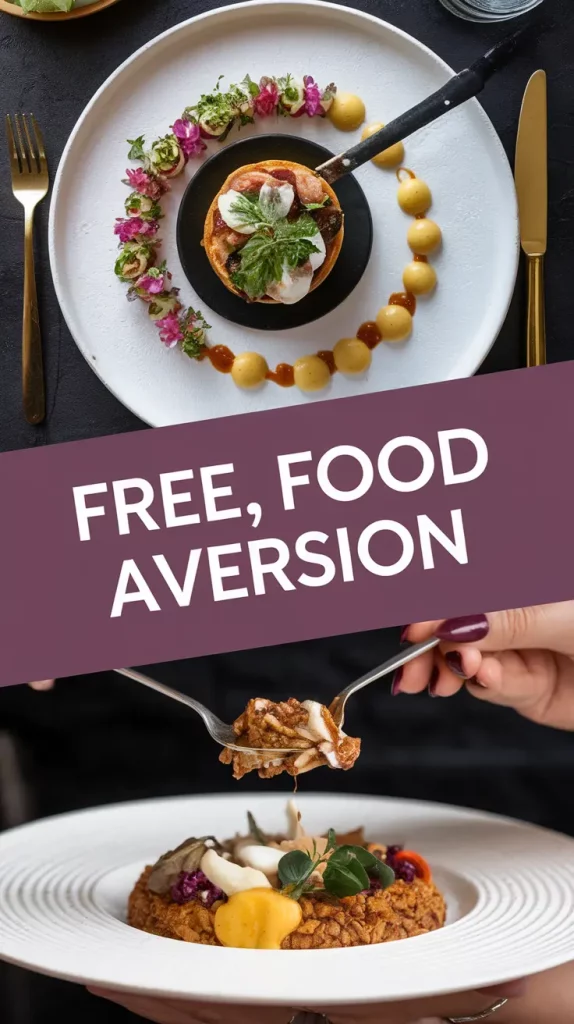Understanding Food Aversion: Navigating Culinary Preferences
Food aversion is a significant yet often overlooked aspect of our eating habits. In today’s culinary landscape, where diverse diets and preferences abound, understanding food aversion becomes crucial. It affects meal choices and can lead to limited eating habits, making it essential to explore how to navigate these preferences with creativity and practicality.
What is Food Aversion?
Food aversion is defined as a strong negative reaction to certain foods, which can stem from both psychological and physiological factors. It may manifest as a dislike or even a fear of specific textures, smells, or flavors. Historically, food aversions have played a role in dietary choices, often influenced by early experiences or cultural backgrounds.
Understanding food aversions is essential for creating enjoyable meals. By accommodating these preferences, we can foster a more inclusive dining experience. Utilizing visual aids like Food Icon PNG can further enhance this understanding, helping to identify appealing food options for those with aversions.

Understanding Food Aversion
Common food aversions include things like spinach, mushrooms, or seafood, often triggered by past negative experiences or strong flavors. Additionally, cultural influences play a significant role in shaping these aversions, as certain foods may be more acceptable in some cultures than others. Personal experiences, such as food poisoning or strong sensory reactions, can also contribute significantly to the development of food aversions.

The Best Dinner Recipes for Food Aversion
Ingredients
-
Main Ingredients
2 cups quinoa for a gluten-free base, 1 cup diced bell peppers for sweetness, and 1 cup black beans for protein.
-
Seasoning Mixture
Include spices such as 1 teaspoon turmeric for color and health benefits, and 1 teaspoon cumin for a warm, earthy flavor.
-
Optional Add-Ons
Suggest ingredients like 1 tablespoon nutritional yeast for a cheesy flavor without dairy, or 1 tablespoon of olive oil for richness.
Directions
Preparation Time: 15 minutes
Cooking Time: 30 minutes
To prepare, start by chopping vegetables into bite-sized pieces and rinsing quinoa. In a pot, combine quinoa and water, bringing it to a boil.
- Saut the vegetables in a pan until tender.
- Add the cooked quinoa and seasoning mixture to the pan, stirring well.
- For added flavor, stir in optional ingredients as desired.
Keep flavors simple and allow for ingredient substitutions to cater to individual preferences.

Creative Ways to Present Meals
Using Jelly Wallpaper and Pola Kartu can significantly enhance meal presentations, making them visually appealing and inviting. For example, using colorful backgrounds or patterned plates can draw attention to the food. Additionally, incorporating techniques like Scrapbook Printing allows for personalized meal settings that resonate with individual tastes.
Furthermore, Collage Phone Case designs can inspire thematic dinners by reflecting personal aesthetics, thus enhancing the overall dining experience.

Key Takeaways
- Understanding food aversions can help create enjoyable dining experiences.
- Creative presentations can enhance the appeal of meals for picky eaters.
- Flexibility in recipes allows customization for diverse dietary needs.
- Utilizing visual elements can make meals more engaging.
FAQs
- What are the common causes of food aversion? Food aversion can stem from past negative experiences, cultural factors, or sensory sensitivities.
- How can I accommodate someone with food aversions at dinner? Offer a variety of dishes and allow guests to customize their plates.
- Are there specific ingredients to avoid for people with food aversions? It varies by individual, but common culprits include strong spices, certain textures, or specific food groups.
- What are some tips for cooking for picky eaters? Keep flavors simple, focus on familiar ingredients, and allow for customization.
- How can visual elements enhance the dining experience? Attractive presentations can make food more appealing and encourage trying new dishes.
Understanding and accommodating food aversions in meal planning is essential for promoting diverse and enjoyable dining experiences. We encourage you to explore the variety of recipes and presentation ideas provided. Share your experiences with food aversions and how you manage them in the comments below. Dont forget to share this post to help others navigate their food aversions!











